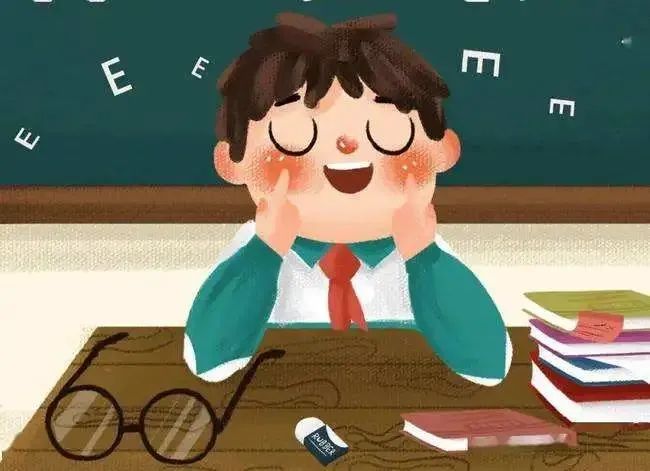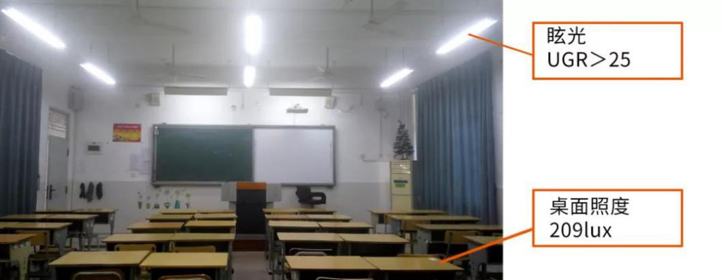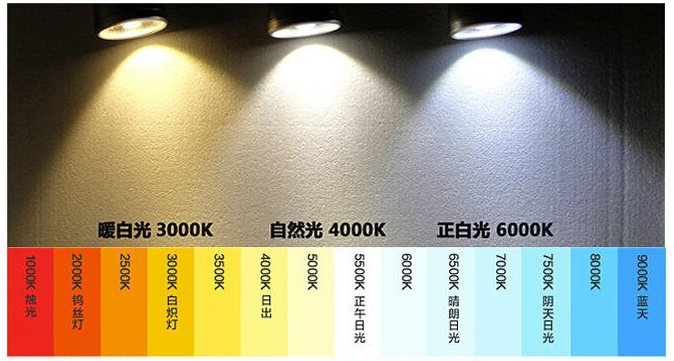At present, the population of nearsightedness in China is as high as 600 million, of which approximately 70% are children and adolescents, and this data is constantly increasing. According to a survey by the National Health Commission, the overall myopia rate among children and adolescents in China in 2022 was 53.6%, with 14.5% for 6-year-old children, 36% for primary school students, 71.6% for middle school students, and 81% for high school students. It is urgent to prevent and control myopia in children and adolescents! Primary and secondary school students have a daily study time of 6-9 hours in school, and the lighting environment in the classroom is an important factor affecting students' visual health. So, what are the common indicators of classroom lighting environment?

1. Illuminance
It refers to the luminous flux of visible light received per unit area, in lux or lx. As the usage time of lighting fixtures increases, their light decay accelerates and the illuminance gradually decreases. Learning in a dim environment not only significantly reduces students' learning efficiency, but also easily leads to myopia.

Primary and secondary schools
The average illumination value maintained on the class desk should not be less than 300lx, and the uniformity of illumination should not be less than 0.7; The average illuminance value of the blackboard should not be less than 500lx, and the illuminance uniformity should not be less than 0.8 (GB 7993-2010, GB/T 36876-2018).
kindergarten
The average illumination value should not be less than 300lx, and the uniformity of illumination should not be less than 0.7. (Reference plane is ground) (DB 31/539-2020)
2. Glare
It refers to the visual phenomenon that causes uncomfortable feeling or reduces the ability to observe details or targets due to inappropriate brightness distribution or range, or extreme brightness contrast in the field of vision, and is represented by the unified glare value (UGR). The high UGR of the lighting fixtures themselves and the unreasonable lighting arrangement can cause glare, not only dazzling, but also distracting learning attention.

The uniform glare value of the classroom should not exceed 19 (GB 7793-2010); The uniform glare value of primary and secondary school classrooms and kindergarten activity rooms is ≤ 16 (DB 31/539-2020). Classrooms should have curtains to prevent direct glare; The surface of the writing board should be made of wear-resistant and matte materials to prevent reflection and glare.
3. Color rendering
Refers to the characteristic of a light source displaying the color of an object compared to a reference standard light source, expressed in terms of the color rendering index (Ra). The higher the color rendering index of the lamp, the more realistic the color, which is beneficial for visual health.

The color rendering index of the light source should not be less than 80 (GB 7793-2010, GB/T 36876-2018); The initial value of the color rendering index for dual ended fluorescent lamps should not be less than 80, and the initial value of the color rendering index for LED lamps should not be less than 90 (DB 31/539-2020).
4. Color temperature
A unit of measurement that represents the color component of light, expressed in K (Kelvin). Different ranges of color temperatures give people different feelings.

It is recommended to use a light source with a color temperature of 3300K-5500K.
5. Blue light protection requirements
Blue light is a type of high-energy visible light. Blue light within the wavelength range of 400nm~450nm can cause "retinal blue light harm". The classification of blue light hazard levels is divided into four categories: non hazardous, low hazardous, medium hazardous, and high hazardous (RG0-RG4).

Double ended fluorescent lighting fixtures for classroom lighting, with a UV radiation level of no harm (RG0); The blue light hazard level of LED classroom lighting fixtures should be non hazardous (RG0). (DB 31/539-2020)
6. Stroboscopic light source
The light emitted by the light source changes rapidly and repeatedly over time, causing the light source to bounce and become unstable. Among the "light pollution", stroboscopic effect is the most common hazard. Stroboscopic effects and flickering phenomena should be prevented in primary, secondary, and kindergarten classrooms.

Lighting device operation and maintenance
Regularly maintain and update damaged and defective light sources and lamps. When the light source or lamp cannot meet the relevant requirements due to light decay, it should be replaced in a timely manner; Clean the surface of lighting fixtures every semester; Classroom lighting retests are conducted every semester for items such as contrast, uniformity, color temperature, and color rendering index.
The replacement period for dual ended fluorescent lamps should be 5 years, and the LED should be 8-10 years. (DB 31/539-2020)
Disclaimer | Some images and texts are sourced from the internet, and the copyright belongs to the original author. Reproduction or citation is only for the purpose of disseminating more information. If there is any infringement, please contact us to delete it. Thank you!
Copyright © 2018 FOSHAN SHUNDE HUADA ELECTRICAL MANUFACTURE COMPANY LIMITED | All Rights Reserved Design by gdhuada.com